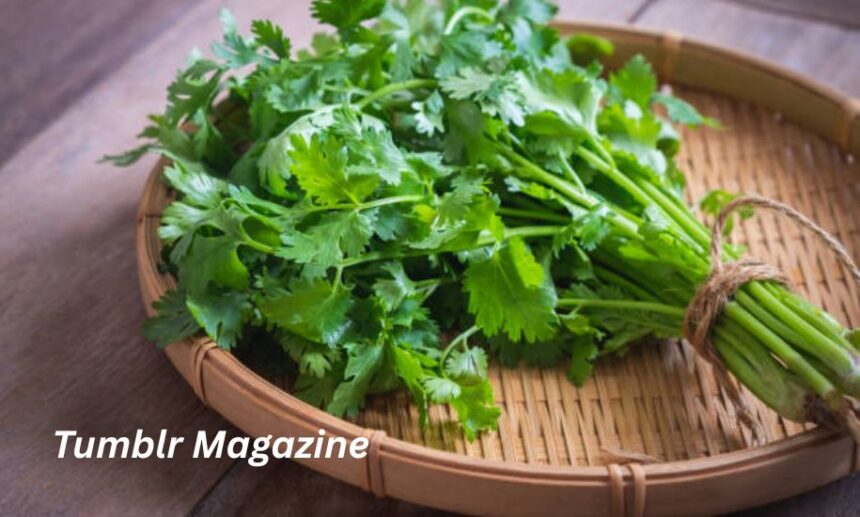Few plants are as versatile and culturally rich as koriandri. Known in English as coriander and in American kitchens as cilantro, this humble green finds its way into salsas, chutneys, soups, stews, and even desserts. It is one of the rare plants where both leaves and seeds are cherished in cuisines across the globe.
In this article, we will explore the many faces of koriandri—its origins, culinary significance, health benefits, cultural meanings, and practical growing advice. Whether you are a food enthusiast, a gardener, or simply someone intrigued by unique global flavors, koriandri is a name worth knowing.
What Is Koriandri?
Koriandri refers to Coriandrum sativum, a member of the Apiaceae family, which also includes parsley, dill, fennel, and celery. Depending on where you are in the world, the plant might be called cilantro (leaves), coriander (seeds), or by local names such as dhania (India), kothamalli (Tamil), or kasbara (Arabic).
This dual identity—one plant, two major culinary uses—makes koriandri unique. The fresh leaves have a citrusy, sharp aroma that divides opinions. Meanwhile, the seeds are warm, nutty, and lemony, prized in spice blends like garam masala, ras el hanout, and curry powders.
A Short History of Koriandri
Koriandri has been cultivated for over 7,000 years, making it one of humanity’s oldest culinary herbs. Seeds of coriander have been found in ancient Egyptian tombs, suggesting that it played a role not only in cooking but also in spiritual or medicinal practices.
The Greeks and Romans used it both as a seasoning and a preservative in wines. Later, koriandri spread across Asia, where it became an essential ingredient in curries, stir-fries, and medicinal tonics.
Today, koriandri is grown worldwide and is one of the most commonly used herbs in kitchens from Mexico to Morocco, India to Italy.
Flavor Profile: Leaves vs. Seeds
One of the most fascinating things about koriandri is that different parts of the same plant taste completely different:
-
Leaves (cilantro/koriandri leaves): Bright, citrusy, slightly peppery, with a green herbal sharpness. Some people detect a soapy flavor due to a genetic variation (the OR6A2 gene), which makes them highly sensitive to the plant’s aldehydes.
-
Stems: Often discarded, but actually flavorful and softer than parsley stems. Great in chutneys, broths, or finely chopped into salads.
-
Seeds (coriander): Warm, nutty, and slightly sweet with citrus undertones. Unlike the leaves, coriander seeds lose their harshness when roasted, becoming aromatic and complex.
-
Roots: Common in Thai cuisine, where they form the base of curry pastes and soups.
This dual nature makes koriandri both loved and misunderstood, depending on which part of the plant a culture emphasizes.
Culinary Uses Around the World
India & South Asia
In Indian cooking, koriandri leaves (dhania) are blended into chutneys, garnished on curries, and tossed into salads. Seeds are roasted and ground into spice mixes or used whole in pickles.
Middle East & Mediterranean
Coriander seeds flavor stews, breads, and sausages. In Moroccan cuisine, they pair with cumin in tagines. In Mediterranean cooking, koriandri often seasons fish and meat dishes.
Latin America
Cilantro is a star of Mexican cuisine, brightening salsas, tacos, and guacamole. It also flavors soups like caldo de pollo and stews like pozole.
Southeast Asia
Thai, Vietnamese, and Indonesian cuisines use the leaves, seeds, and roots alike. Coriander is essential in pho, curries, and chili pastes.
Europe & Beyond
While coriander leaf is less common in European cooking, the seeds are often found in sausages, breads, and liqueurs like Chartreuse.
Health and Nutrition Benefits
Modern research supports many traditional uses of koriandri. While it should not be seen as a cure-all, it offers notable health benefits:
-
Nutrient-rich: Leaves provide vitamins A, C, and K; seeds offer minerals such as iron, magnesium, and manganese.
-
Digestive aid: Traditional medicine systems use coriander seeds to relieve bloating, indigestion, and nausea.
-
Antioxidant potential: Both seeds and leaves contain antioxidants that help neutralize harmful free radicals.
-
Blood sugar support: Preliminary studies suggest coriander seeds may help regulate glucose metabolism.
-
Anti-inflammatory properties: Some compounds in coriander may reduce inflammation markers.
These claims are still under research, so it’s best to enjoy koriandri as part of a balanced diet rather than a miracle remedy.
Growing Koriandri at Home
Climate & Soil
Koriandri prefers cool seasons (spring and fall) and grows best in well-drained soil with full sun to partial shade.
Planting
-
Sow seeds directly into the soil (they don’t transplant well).
-
Plant successively every 2–3 weeks for continuous harvest.
Care
-
Keep soil consistently moist.
-
Thin seedlings to avoid overcrowding.
-
Protect from heat, as the plant bolts quickly in hot weather.
Harvest
-
Leaves: Start snipping once plants are 6 inches tall.
-
Seeds: Let flowers bloom, form seed heads, and dry before harvesting.
-
Roots: Carefully pull up mature plants for Thai cooking.
The Genetics of Taste: Why Some Hate Koriandri
One of the most debated aspects of koriandri is its polarizing flavor. While many find it refreshing, others insist it tastes like soap.
This divide is genetic. People with a variant of the OR6A2 gene are sensitive to aldehyde compounds in coriander leaves. These same compounds are found in soaps and detergents, explaining the association.
Understanding this can turn arguments into amusement—you might love koriandri, but your friend who can’t stand it is not just picky; their DNA is guiding their taste buds.
Cultural Symbolism and Beliefs
Throughout history, koriandri has carried cultural meanings beyond the kitchen:
-
Egyptians buried coriander seeds in tombs as symbols of eternal love.
-
Romans used it to preserve meats and wines.
-
Chinese medicine values koriandri for aiding digestion and stimulating appetite.
-
Ayurveda uses coriander seeds in cooling tonics and teas.
Even today, koriandri features in folk remedies across Asia and the Middle East.
Modern Trends: From Kitchens to Wellness Blogs
Recently, koriandri has gained renewed popularity in health-conscious cooking and herbal wellness circles. Bloggers promote coriander detox teas, infused waters, and coriander seed powders as supplements.
While not all claims are scientifically validated, koriandri’s versatility and low-calorie nutritional profile make it a natural fit for modern diets, especially plant-based and fusion cooking styles.
Misconceptions and Clarifications
-
Is koriandri the same as cilantro? Yes—different regions use different names for the same plant.
-
Do the seeds come from another plant? No—same plant, different stage of growth.
-
Is koriandri only for savory dishes? No—coriander seeds add warmth to baked goods and desserts.
It’s also worth noting that “Koriand’r” is the name of a DC Comics character (Starfire). Don’t confuse her with the spice!
Conclusion
Koriandri is far more than just a garnish. It is history, medicine, and flavor rolled into one modest green herb. From the leaves that spark debates at dinner tables to the seeds that give depth to spice blends, koriandri embodies culinary duality.
Next time you chop fresh cilantro into salsa, grind coriander seeds into curry, or brew coriander tea for digestion, remember that you are participating in a tradition spanning millennia and continents.
For more such explorations of ingredients, traditions, and global flavors, visit Tumblr Magazine, where food meets culture and history.







